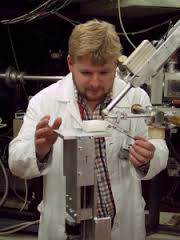Introduction of Thomas Birch
New assistant professor at UrbNet.

Tom is an archaeologist that has been working closely with artefacts and archaeological materials since completing his MSc. at UCL in 2009. His Master’s dissertation focused on a cargo of iron bars from a medieval shipwreck in the Thames, understanding their manufacture and chemical groups and adding to the interpretation of the wider cargo (lead and tin ingots) in a maritime network. For his Doctoral thesis, Tom analysed lances and knives from weapon deposits in East Jutland, differentiating standardised and localised manufacturing practices as well as sourcing the origins of the iron used. The results provide further insights into the dynamic network and movement of iron across Southern Scandinavia during the Iron Age.
During his recent post-doctoral positions at Goethe Universität (Frankfurt) and UCL Qatar (Doha), Tom has been re-constructing silver networks through provenancing some of the earliest silver coinage from the Western Mediterranean (Southern Italy and Sicily, 500 – 100 BCE) using isotopic and chemical techniques, and has also been re-constructing iron smelting practices at the Royal City of Meroe in the Kingdom of Kush (Sudan, 500 BCE – 500 CE). Tom has enjoyed collaborating with other research projects covering a broad chronological and geographical range, including Neolithic Anatolia, colonial Mauritius and multiple case studies spanning the Iron Age to medieval period in Europe. Recently, he has been working with archaeologists in Iceland to further understand its early metallurgy, looking in particular at iron production and crucible metalworking. During his research, Tom has worked in multiple archaeological and geoscience laboratories across Europe, gaining experience in a wide range of analytical techniques and statistical methods.
At UrbNet, Tom will be collaborating extensively with the UrbNet group and their projects, in particular studying material assemblages for their composition, their provenance and their technology, aiming to understand how they influence and are influenced by the evolution of urban networks. He will also be continuing with his own research focused on polymetallic industries in urban contexts in Northern Europe.
